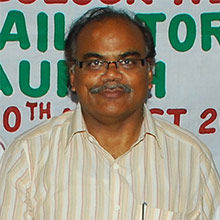Integrated Handloom Cluster Development Programme: Is it responding to the learning's from UNIDO Approach?
Introduction
The profound political and economic changes that have taken place over the last decade pose serious challenges for governments, private business, and civil society. The conversion of command systems to more open markets and the restructuring of enterprises, with the consequent need to find employment outside big government and large corporations, have given rise to a tide of entrepreneurism.
Times change so rapidly, and running a business is so complex these days that owner-managers can easily find things getting out of control if adequate planning and control are not undertaken and implemented. Competition seems to be getting tougher all the time. In most cases, small businesses find themselves competing with much larger companies—ones that know the benefits of long-range planning and practice it. Yet, case studies have emerged from various parts of the world showing that clusters of small enterprises have broken into international markets. The best-known cases are the Italian industrial districts, and similar cases come from other advanced countries. But perhaps the most interesting come from less developed countries. For example, Brazil is today a major shoe exporter. Pakistan is today one of the world's main exporters of surgical instruments.
Integrated Handloom Cluster Development Programme was taken up by the government of India in the backdrop of a crisis in the handloom sector, marked by suicides by handloom weavers, and subsequent advocacy by various individuals and institutions. It is also one positive program of the government aimed to help in the development of the handloom sector. Given the circumstances in which the program has been thought of, it is imperative that one should look at how this program is being organized.
Cluster Development Programme
The history of Cluster development program can be traced to 1995 when UN Industrial Development Organization (UNIDO) aimed to strengthen the competitive advantage of SSI clusters. From a UNIDO survey of the largest Indian clusters conducted in 1996, it emerges that the majority of them comprise small-scale enterprises that perform the entire production process in-house, and that subcontracting (to other small, medium, or large-scale firms) is relatively less frequent. It is estimated that over 60% of the Indian manufacturing exports are generated by clusters (UNIDO, 1997).
The author is an Independent Textile Analyst

20240830145908.gif)







Comments